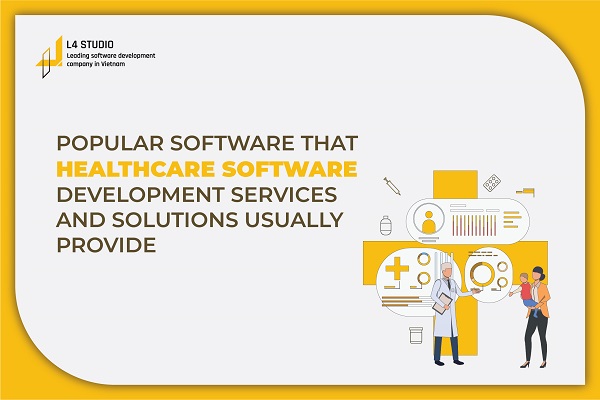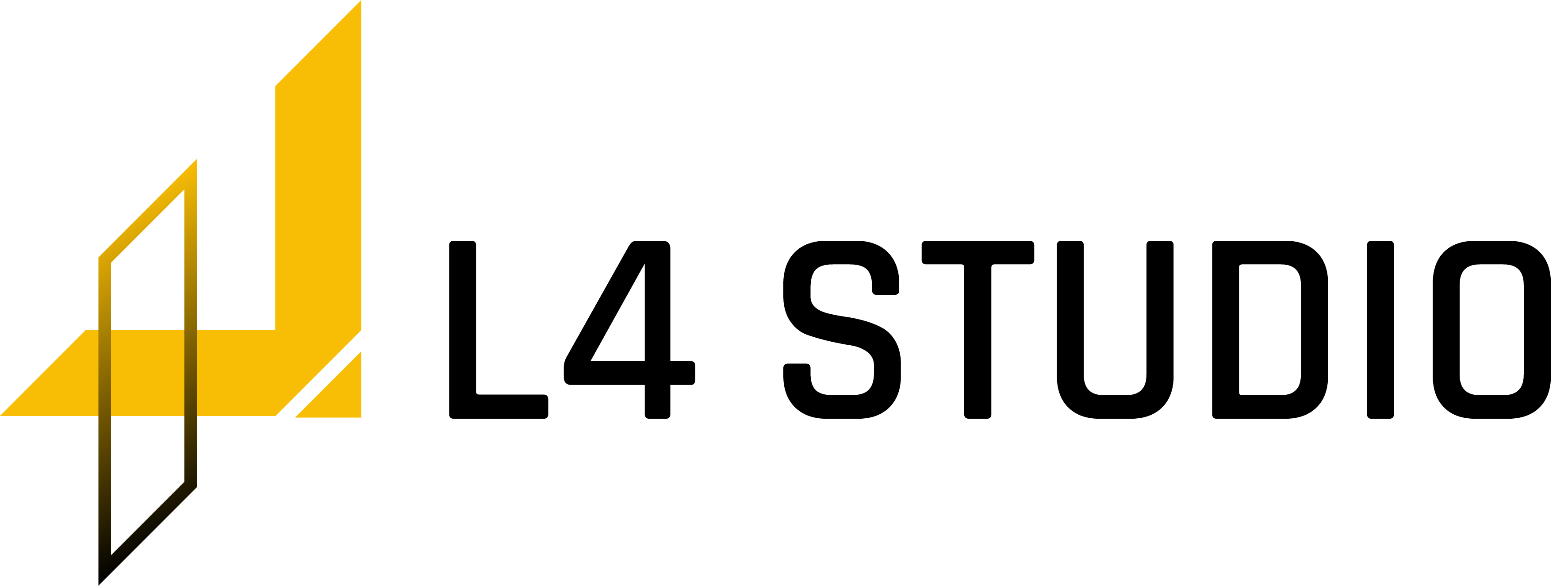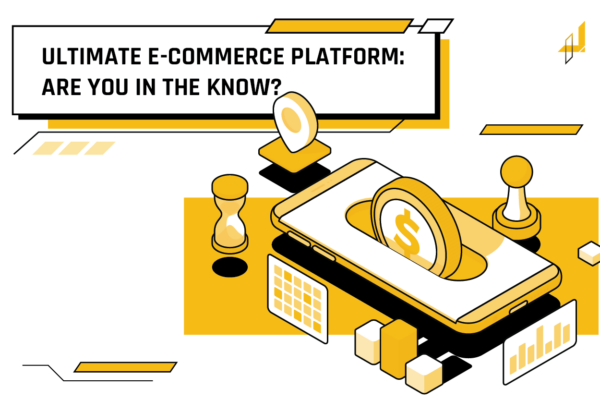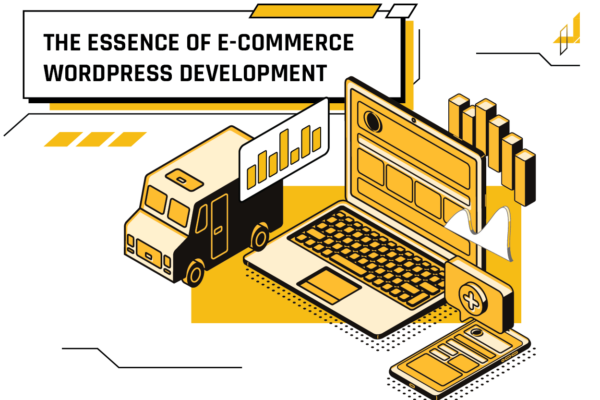
Popular software that healthcare software development services and solutions usually provide
Doctors, nurses, management personnel, and other healthcare stakeholders can all benefit from various types of healthcare software. Hospitals and other healthcare facilities frequently use the following types of apps that healthcare software development services and solutions have.
1. EHR SOFTWARE
The most common type of IT software used by hospitals and clinics is EHR software. For those who are familiar with CRM, EHR is the same as CRM but was created by healthcare software development services and solutions specifically for the healthcare sector.

Figure 1. EHR software help doctors have more insight into patient’s information
EHR software also refers to gathering patient information, such as a patient’s name, address, prescriptions, recommended treatments, and past procedures.
The most important EHR feature is that the patient’s health information can be created and managed by authorized providers. Then it shared with other providers across more than one healthcare organization. This does not only automate and streamline the providers’ workflow, as they do not need to collect the same information all over again from the same patient, but they also visibly improve the patient’s care. EHRs reduce errors, improve patient safety, and support better patient outcomes.
Some of the EHRs not only keep records of patient medications and allergies but automatically check an integrated medication database, when a new medication is prescribed to alert the doctor to a potential conflict or allergy. They often include a finance module for invoicing and payment with billing information, and all of them: a separate portal for the patient to access their data.
Overall, EHRs reduce the risk of data replication, losing data, or important information about a patient’s health. They are also cost-efficient, compared to paper medical records, which are more likely to be duplicated, illegible, or destroyed over a long period of time.
EHRs are used in both clinics and hospitals and are usually integrated with internal hospital/clinic management software.
The following are the top two categories of EHR software:
- Hospital management uses electronic patient record software (EPR software) internally to store and process patient data.
- Data like patient prescriptions, medical records, and consultation histories are stored using electronic medical records software (EMR software).
2. MEDICAL DATABASE MANAGEMENT SOFTWARE
Medical database management software is a technology that allows healthcare providers to store, manage, and retrieve medical data in an electronic format. This software is used to manage patient records, clinical data, medical images, test results, and other important medical information.
Medical database management software is essential for healthcare providers because it eliminates the need for paper records and allows for faster, more accurate, and more secure information retrieval. This software also helps to improve patient care by providing real-time access to patient data, which can help providers make more informed clinical decisions.
Features of medical database management software may include patient registration, appointment scheduling, medical billing and insurance claims management, prescription management, and electronic health records (EHR) management. Some medical database management software may also include decision support tools that help healthcare providers make more informed clinical decisions based on patient data.
Examples of popular medical database management software include Epic, Cerner, Allscripts, and Meditech. These software solutions are used by healthcare providers in hospitals, clinics, and other medical facilities around the world.
Although medical database software categorizes by diseases rather than patients, it is very similar to the EHR system in that it stores information about patients’ diagnoses. It aids medical professionals in:
- Cross-referencing patients’ cases with a similar disease to make better treatment choices.
- Studying the clinical cases of a specific disease to educate themselves.
3. TELEHEALTH SOFTWARE
Telehealth software is a type of technology that enables healthcare professionals to deliver healthcare services to patients remotely using video conferencing, texting, and other digital communication tools. Patients can obtain medical consultations, diagnosis, prescriptions, and even follow-up treatment from the comfort of their own homes or other remote places using telehealth software.

Figure 2. Telehealth software help connect doctors and patients online
There are many programs available to deliver telehealth services and healthcare software development services and solutions; notice that the COVID-19 lockdown has recently increased demand for this category of medical software, because it enables healthcare providers to continue delivering essential healthcare services while minimizing the risk of transmission of infectious diseases. It also helps to improve access to care, particularly for patients who live in remote or underserved areas, or those who have mobility or transportation issues.
Examples of popular telehealth software include Doxy.me, Teladoc, Zoom for Healthcare, and Amwell.
4. HOSPITAL MANAGEMENT SOFTWARE
HMS aids hospital administration in daily tasks such as automation of accounting, medical billing, billings, claims, in-out patient management, inventory management, and other time-consuming tasks.
HMS frequently has two distinct portals, one for patients and one with management-oriented features. The management panel covers all administrative and medical data required by the hospital, including scheduling for physicians’ visits and managing the supply of food and medications. Nonetheless, there are also utterly uninteresting components, such as laundry management, energy costs, water and electricity usage, supply inventories, etc.
The patient portal must have all of the following information: a digitalized patient registration form, all admittance information (which is frequently synchronized with electronic medical records). Sometimes, patient billing information, insurance, notifications about admittance, procedures, doctor appointments, and information about all medications and prescriptions.
Hospital management systems not only increase general productivity, simplify processes, but also enhance the patient experience at all times. Hospitals may also gather and examine useful data on many facets of their operations thanks to HRS.
To manage patient records simultaneously, HMS integrates with EHR software to enhance the result.
5. MEDICAL DIAGNOSTIC SOFTWARE
Medical diagnosis software automates the sharing of patient data in real-time between various medical specialists, enabling safe and accurate medical diagnoses inside hospitals. In particular, by entering pertinent data and findings of a patient in medical diagnosis software, medical specialists can accurately diagnose the disease.
We may divide medical diagnosis software into two categories: applications for patients and a more advanced type: diagnosis software for medical experts.
Diagnostic apps for patients provide symptom checks and knowledge based on medical expertise, rather than Google Search. During the pandemic, they were a popular tool for guiding patients through potential Covid-19 symptoms. This solution was used by several countries as part of their agenda. But these self-diagnosis apps can be used in a variety of other conditions to aid patients that could be feeling powerless and lost facing the black hole of symptoms available on Google.
The other sort of diagnosing software is geared for medical experts. AI diagnosis software can help clinicians gather and analyze data, leading to faster diagnosis and research. Any anonymised data can be shared throughout healthcare organizations.
Healthcare software development services and solutions make this software to encourage cooperation among various medical specialties. Web-based expert systems for nutrition diagnosis and Holonic Diagnosis System for e-health applications are two examples of medical diagnosis software.
6. HEALTH TRACKING APPS
A person’s health data is tracked and monitored using health tracking software. This information might range from weight and BMI to blood pressure and cholesterol readings.Health monitoring software can be used by healthcare professionals and individuals to manage their health.
Health tracking software can be beneficial to both healthcare practitioners and patients. It can assist healthcare practitioners in identifying possible health issues and making required changes to the patient’s care plan. For patients, health tracking software may give a vital overview of their overall health.
In 2019, the market for mobile health apps was valued at $37 billion worldwide. The figures indicate a further increase in valuation in recent years. The mobile Health app market owes a significant portion of its success to:
- Exercise Apps
- Nutrition and Dietary Apps
- Apps for stress reduction and meditation
- Period tracking apps
Healthcare software development services and solutions can be integrated with IoT devices, which is a further advancement in health tracking. Health monitoring watches, for instance, are used to collect and analyze health data.
7. SOFTWARE FOR VISUALIZATION AND IMAGING
Medical imaging is a sort of telemedicine technology that adds data gained from pictures to existing databases. AI and machine learning are frequently used to examine data much faster than a person can.
An MRI/PET scan performed in Italy can be sent to a facility in the US for reliable analysis and diagnosis. As a result, even patients suffering from highly uncommon illnesses will have a better chance of receiving an accurate diagnosis. Considering the foregoing, it is evident that the potential for B2B integration is enormous.
Thanks to modern medical technology like CT and MRI, it is now much simpler to accurately identify internal body damage. Additionally, successful programs that aid in visualization for surgical planning and telesurgery have been created by healthcare software developers.
Doctors and clinicians can quickly and accurately diagnose various body systems thanks to this imaging and visualization software.
SUMMARY
The use of IT in healthcare holds a wide range of potential by releasing the strength and potential of computational systems, data science & analytics, as well as with evolution in 5G and cloud computing. Healthcare software development services and solutions can help you build apps with the latest technologies
Sources: Internet
——————————
L4 STUDIO – LEADING SOFTWARE DEVELOPMENT COMPANY IN VIETNAM
Website: https://l4studio.net/
Email: hi@l4studio.net
Phone: (+84) 28 6675 6685
Our Healthcare Software Development Services: https://l4studio.net/healthcare-software-development-services/
For more interesting blogs: https://l4studio.net/it-knowledge/
Follow us at: https://www.facebook.com/L4Studiovn/
Read more: HOW TO CHOOSE A HEALTHCARE SOFTWARE DEVELOPMENT COMPANY FOR YOUR NEXT PROJECT?








